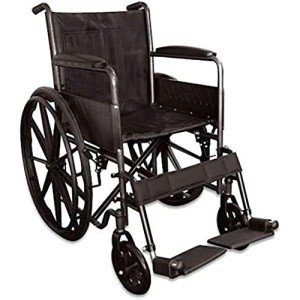The Reasons You Should Experience Bariatric Wheelchair 24 Inch Seat At A Minimum, Once In Your Lifetime
Bariatric Wheelchair Seat Width Seat Width Having the proper seat width is necessary to wheelchair users who invest longer periods in their chairs. Too narrow a seat will cause pressure on the hips and thighs which could lead to sores or pressure points. Having too large a seat can also make it tough for the user to reach the hand rims to propel themselves or maneuver in little areas. To determine the proper seat width an individual would sit on a chair usually and have their measurement taken throughout their lap at the widest point which is normally their hips. A wheelchair measuring tape can be utilized to determine this, but a lawn stick is chosen as it prevents individuals from covering the tape around their hips which would offer an unreliable outcome. The standard wheelchair seat width is 16” (narrow adult), 18” (standard adult), and 20” (wide grownup). For click through the up coming post , a 24” seat is available. This durable extra large bariatric wheelchair from Medline includes swing-away footrests, a carbon steel frame with rust- and chip-resistant chrome plating, and easy-to-clean vinyl upholstery. It has a weight capacity of 500 pounds. Seat Depth Typically, the seat depth of a bariatric wheelchair was added 2” to the measurement taken at the user's best point (normally their hips). This was implied to accommodate extra layers of clothing that may be used throughout cold weather condition. Nevertheless, this practice is ending up being less typical as wheelchair users have the ability to invest more time inside and are not wearing long coats. This makes the seat depth of a chair less essential when selecting a bariatric wheelchair. However, it is still essential to pick an alternative that provides sufficient support for larger users. The Medline folding extra large bariatric manual wheelchair includes a comfy 24” seat width and a sturdy slide tube silver vein frame. It also has an adjustable axle and tool-free raising legrests. Seat Height When it pertains to identifying the appropriate wheelchair seat width you ought to always determine from the user's largest point which is normally their hips. You will likewise require to think about whether the user is going to be wearing a winter coat as this might add 2” to the width needed. When a wheelchair remains in use it need to only be run on level surfaces with the wheel locks completely engaged. This is to avoid the chair from having the ability to move slopes that are 10 degrees or greater. It is also important to remember that any activity that might shift the center of mass in the chair should be finished with care. This includes grabbing items that require the person to lean out of their seat or attempting to stand up from it. Whenever you have the chair in use it is recommended that you regularly inspect it for damage and lube any areas that are deemed necessary. For example, the casters must be lubed by removing the caster fork and utilizing a multi-purpose grease to apply to the caster stem bearings. Likewise, the foot plates can be adjusted by loosening the bolt and after that moving them to the preferred position. This enables the feet to sit easily on the footplate and avoids any pressure points from forming. This can be extremely uneasy for the user and if left unattended, can lead to push sores. Weight Capacity Bariatric wheelchairs are developed to support more weight than basic wheelchairs. This makes them sturdier and better geared up to handle falls. They are also normally bigger and wider, making them less maneuverable in tight spaces than standard wheelchairs. They require automobiles with unique ramps and lifts to load them, as well as chauffeurs who understand how to finest transport them from one location to the next. When choosing a wheelchair, consider its weight capacity as it will be the main determining element in whether it will accommodate your guest's requirements. The weight capacity of the chair is typically listed as a static load, implying that it indicates the amount of weight the chair can conveniently hold while standing still. However, some manufacturers likewise list an active load that is based on a drop test and can mimic the result of somebody sitting down in the chair. This may be a more reliable measurement of the weight limit, depending on your needs.  If you plan to perform activities that move your center of gravity in the seat (such as reaching for objects), make sure to have front casters pointed in a forward instructions and wheel locks engaged so the chair will not topple. Likewise, inspect that casters are oiled routinely to avoid extreme wear and abrasions. The lubrication procedure involves eliminating the fork, separating the caster from the wheel, and greasing the caster stem bearings with top quality multi-purpose grease.
If you plan to perform activities that move your center of gravity in the seat (such as reaching for objects), make sure to have front casters pointed in a forward instructions and wheel locks engaged so the chair will not topple. Likewise, inspect that casters are oiled routinely to avoid extreme wear and abrasions. The lubrication procedure involves eliminating the fork, separating the caster from the wheel, and greasing the caster stem bearings with top quality multi-purpose grease.